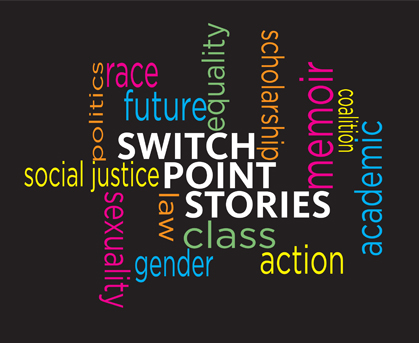Event Title
Panel 2: Intersections of Sex, Race, Gender & Juvenile Justice
Location
Krongard Room
Start Date
29-3-2013 11:15 AM
End Date
29-3-2013 12:30 PM
Description
Teenagers live at the switch point between childhood and adulthood: sexually mature, yet still developing mentally, physically, socially and emotionally. This panel, in turn, includes intersecting views of childhood through literary theory, legal reform, and activists’ attempts to remedy the pressing real-world concerns of LGBT kids. On the theoretical front, an English professor explains the switch point metaphor’s ability to decode discussions of race, gender and sexuality by tracing her own history as a queer child, suggesting that high theory can help academics, pediatricians, and the rest of us more clearly conceive childhood and queerness. Turning to law, a leading litigator of LGBT cases describes how domestic violence and zero-tolerance anti-bullying measures can paradoxically harm the very people they are intended to protect by propelling more young people into the criminal justice system. Activists round out the panel by demonstrating the many ways that race, religion, socio-economic factors, access to health care and immigration status play a central role in the vulnerability of LGBT teens, and what law can do to make things better.
Media Format
youtube
Media Format
flash_audio
Full Text of Presentation
wf_yes
Panel 2: Intersections of Sex, Race, Gender & Juvenile Justice
Krongard Room
Teenagers live at the switch point between childhood and adulthood: sexually mature, yet still developing mentally, physically, socially and emotionally. This panel, in turn, includes intersecting views of childhood through literary theory, legal reform, and activists’ attempts to remedy the pressing real-world concerns of LGBT kids. On the theoretical front, an English professor explains the switch point metaphor’s ability to decode discussions of race, gender and sexuality by tracing her own history as a queer child, suggesting that high theory can help academics, pediatricians, and the rest of us more clearly conceive childhood and queerness. Turning to law, a leading litigator of LGBT cases describes how domestic violence and zero-tolerance anti-bullying measures can paradoxically harm the very people they are intended to protect by propelling more young people into the criminal justice system. Activists round out the panel by demonstrating the many ways that race, religion, socio-economic factors, access to health care and immigration status play a central role in the vulnerability of LGBT teens, and what law can do to make things better.

Comments
Moderated by Susan Leviton, University of Maryland Francis King Carey School of Law.